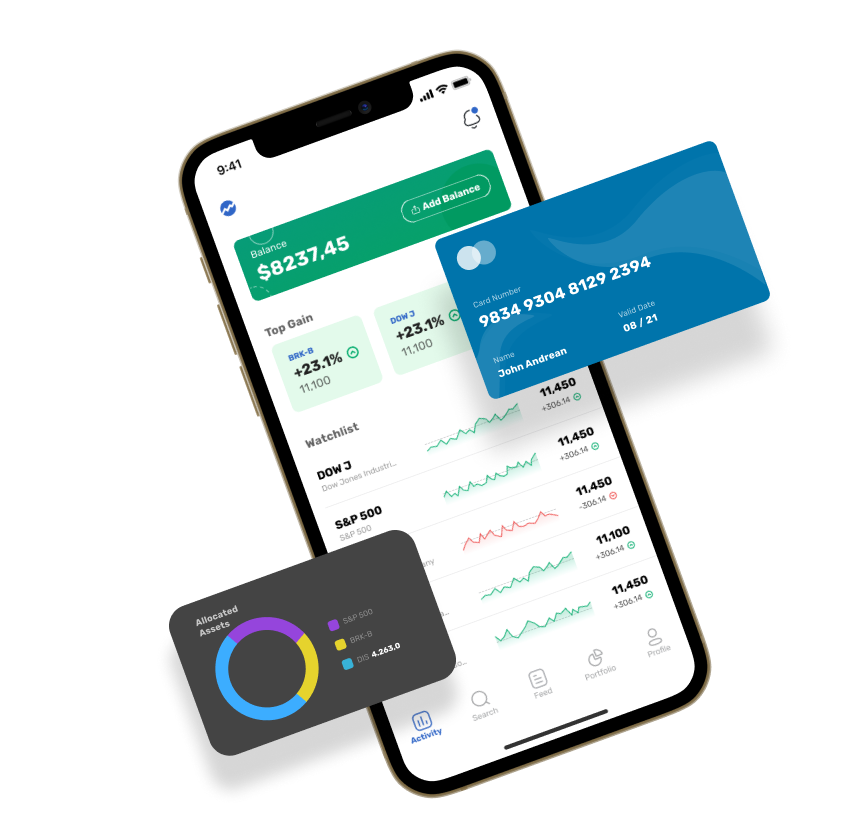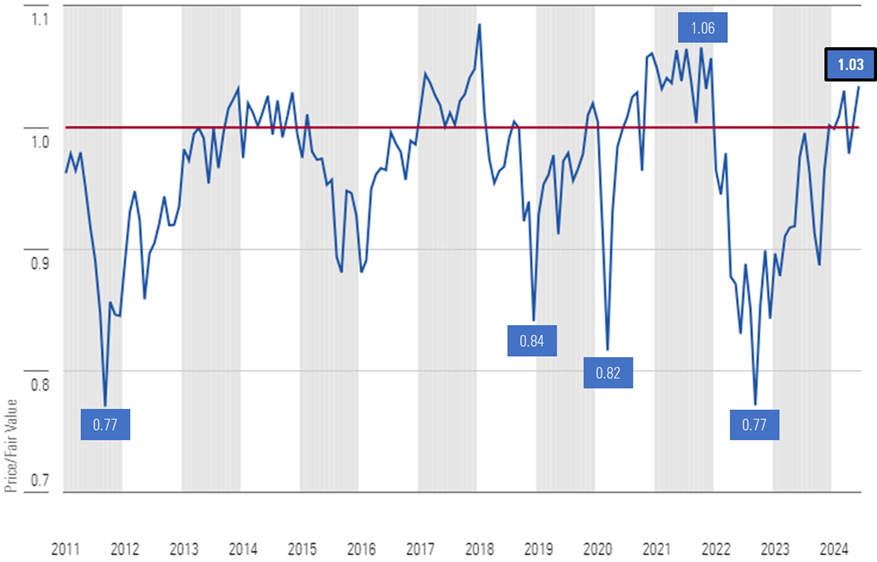It's crucial to examine the accuracy and performance AI stock predicting platforms and trading platforms to make sure you are trusting tools that can provide reliable insights. Here are ten top suggestions to evaluate these platforms.
1. Backtesting Results
What to look out for: See whether the platform provides backtesting to determine how well its predictions have performed based on historical data.
Why it Matters: By comparison of the AI model's predictions against actual historical results Backtesting confirms its accuracy.
Find platforms that provide the capability of setting up backtesting parameters.
2. Real-Time Performance Monitoring
What to look out for: Evaluate the performance of the platform under real-time market conditions.
Why It's Important: Real-time performances are more reliable indicators of the efficiency of a system than the backtesting of the past.
Tip: Use the demo account or a free trial to track real-time predictions and compare them with the actual market trends.
3. Prediction Error Metrics
What to look for Analyze metrics like Mean Absolute Error (MAE), Root Mean Squared Error (RMSE), or R-squared, to measure the accuracy of your predictions.
Why it matters: These metrics are a quantitative way to gauge how closely predictions match actual results.
Platforms that share metrics openly are typically more transparent.
4. Ratio of Success and Win Rate
What to Check: The platform's win ratio (percentage for correct predictions) and its rate of success (profitability based upon forecasts).
Why it Matters Why it Matters: High win rates and success ratios show greater predictive accuracy and potential revenue.
No system is perfect. Be wary of platforms that promise unrealistic win rates, e.g. 90% %+),.
5. Benchmarking against market indicators
What to Look For What to Look For: Compare the platform's forecasts and performance to important market indices (e.g., S&P 500, NASDAQ).
Why it is Important It helps to determine if the platform outperforms or is underperforming the market in general.
Look for steady gains over a long period of time.
6. Consistency in Market Conditions
What to look for Find out how the platform's performance is affected by different market conditions (bull or bear markets and high volatility).
What's important The platform that is robust must be able to perform in all market conditions and not only when the market is in good shape.
Try the platform's predictions during volatile markets or markets that are down.
7. Transparency in Methodology
What to Look for : Understand AI algorithms and models (e.g. neural nets and reinforcement learning).
What is important: Transparency helps you evaluate the reliability and scientific rigor.
Avoid platforms that use models with "black boxes" that do not explain the process by which predictions are made.
8. User Reviews and Independent Testing
What to look for: Read user reviews and look for independent testing or third-party assessments of the platform.
Why it's important: Independent reviews, testing and evaluations provide unbiased and unbiased information on the accuracy of the platform and its performance.
Tips: To know what people think of users, look up forums such as Reddit copyright and financial blogs.
9. Risk-Adjusted Returns
What to Look Out For: Evaluate the platform's performances using risk adjusted indicators such as Sharpe Ratios or Sortino Rateios.
What is important: These metrics take into account the amount of risk required to achieve returns. This provides a comprehensive overview of the performance.
Sharpe Ratio: If high (e.g. > 1), this indicates higher returns when the risk factor is taken into consideration.
10. Long-term Track Record
What to Look For What to Look For: Examine the platform's performance over a long time (e.g. 3 to 5 years).
What is important: Long-term performance is a better gauge of reliability than the results from a short-term study.
Do not use platforms that have only short-term success or results that are cherry-picked.
Bonus Tip: Make use of a Demo Account to test.
Try a demo account or free trial to test the platform's predictions in real-time, without risking any real money. This gives you the opportunity to test accuracy and performance.
With these suggestions by following these guidelines, you can fully evaluate the accuracy and performance of AI stock predicting and analyzing platforms, ensuring you choose one that aligns with your goals in trading and your risk tolerance. It is essential to understand that there isn't a perfect platform. The best strategy is to mix AI insights with your own research. View the recommended ai stock trading blog for blog info including trading ai, ai investing app, ai stock trading, best ai trading app, ai trading, ai stock market, best ai trading app, using ai to trade stocks, market ai, investment ai and more.

Top 10 Tips To Assess The Regulatory Compliant Of Ai Stock Analysis And Prediction Platform
Regulation compliance is an important element to evaluate trading platforms that use AI. Compliance ensures that a platform complies to financial regulations and adheres to legal frameworks and safeguarding user data. This minimizes the chance of legal or financial issues. Here are 10 top ways to evaluate the compliance with regulations of these platforms:
1. Verify the licensing and registration
Authorities regulating the platform: Make sure that the license and registration is with the appropriate financial regulatory authorities (e.g. SEC or FCA in the USA, ASIC or ASIC in Australia).
Verify the broker partnership. If the platform incorporates brokers, make sure they are properly licensed and monitored.
Public records: Go to the official website of the regulator to check on the status of registration as well as past violations.
2. Check for Data Privacy Compliance
GDPR - If your platform operates in the EU and/or provides services to users in the EU make sure it complies with GDPR.
CCPA For those who reside in California, verify that they are in compliance with the California Consumer Privacy Act (CCPA).
Data handling policy: Ensure you read the privacy policies to know the ways in which data of users is stored and collected.
3. Evaluation of Anti-Money-Laundering Measures
AML Policies: Ensure that the platform you use has AML policies that are strong to detect and stop money laundering.
KYC procedures: Determine that the platform adheres to Know Your Customer (KYC) procedures for verifying identity of the user.
Monitoring transactions: Find out if your platform is monitoring all transactions for suspicious activities and notifies the authorities.
4. Make sure you're in compliance with Trading Regulations
Market manipulation: Make sure the platform includes measures to stop manipulation of the market like spoofing or wash trading.
Order types: Verify if the platform is in compliance with regulations regarding order types (e.g. there is no illegal stop-loss hunting).
The best execution: Ensure that the platform adheres to the highest execution procedures. This will ensure that trades are carried out at the most competitive price.
5. Examine Cybersecurity Security Compliance
Data encryption: Ensure the platform is encrypted to safeguard user data in transit and in rest.
Incident response. Verify that there is clearly identified incident response plan on the platform to deal with cyberattacks and data breaches.
Certifications: Find out if a platform is certified to be secure (e.g. ISO 27001, SOC 2)
6. Transparency & Disclosure:
Fee disclosure: Make sure the platform clearly discloses all fees, including extra or hidden charges.
Risk disclosure - Make sure that the platform provides clear risk disclosures. This is especially important for trading strategies that have high leverage or risks.
Performance reporting: Determine whether the platform is transparent and accurate performance reports on its AI models.
7. Make sure that the product is in compliance with International Regulations
Trading across borders If you're trading internationally, make sure that the platform is compliant with all applicable regulations.
Tax reporting: Verify if the platform provides tools or reports that aid users in complying with tax laws (e.g., FIFO rules in the U.S.).
Compliance with international sanctions: Make sure the platform adheres strictly to these and doesn't allow trading with prohibited entities or countries.
8. Examining Audit trail and Record-Keeping
Transaction records: Ensure the platform keeps detailed records of all transactions to be used for audits and regulatory purposes.
User activity records: Verify whether the platform is recording users' activities, such as logins or trades as well as changes to the settings for your account.
Audit readiness: Ensure that the platform can provide all documents and logs in the event of an audit by a regulatory agency occurs.
9. Assess Compliance with AI-specific Regulations
Algorithmic trading regulations: If the platform is able to support algorithmic trading, ensure it complies with regulations like MiFID II in Europe or Reg SCI in the U.S.
Fairness and bias Find out if the platform mitigates or is monitoring its AI models for ethical and fair trading.
Explainability: As stipulated by certain regulations, the platform should provide clear explanations of AI-driven predictions and decisions.
Review User Feedback & the Regulatory History
User reviews: Make use of feedback from users to evaluate the platform's regulatory conformity.
The history of regulatory compliance - determine if the website is associated with any prior legal violations or fines.
Third-party audits: Determine that the platform has regular audits by a third party to ensure compliance with regulations.
Bonus Tips
Legal consultation: Consult a lawyer to ensure the platform is in compliance with all relevant regulations.
Trial period: Test the platform for free or utilize the demo feature to test its compliance features as well as the documentation.
Support for customers: Ensure that the platform provides support to answer questions or concerns with respect to compliance.
Follow these tips to evaluate the compliance with regulations and protect of your interests. Compliance not only minimizes the risk of legal violations, but it also helps build confidence and trust in the service of the platform. Check out the best I was reading this for ai stock predictions for site recommendations including stocks ai, chart analysis ai, how to use ai for stock trading, ai options, best ai stock prediction, ai stock price prediction, best stock prediction website, free ai stock picker, ai trading tool, free ai tool for stock market india and more.
